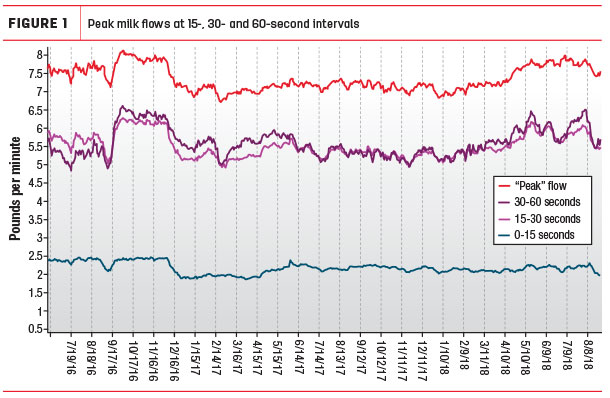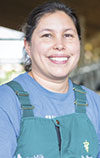Milk quality is always an important issue and, in periods of low milk prices, it can make or break the bank. We all know adherence to a good milking routine, including clean teat ends, proper stimulation, prompt identification of clinical mastitis and accurate treatment are hallmarks of a good milk quality program.
But how do we make sure milkers have the knowledge to do this right and the motivation to keep doing it?
At Quality Milk Production Services (QMPS), we offer in-person training with milkers to explain how to perform the milking procedure and mastitis identification – but also the details of why each step is important. It’s our experience that helping workers understand why each step is important helps keep them motivated to the right thing, even when no one is watching.
The list of advantages from face-to-face training range from answering basic questions sometimes taken for granted to explaining a certain aspect in much more detail due to knowledge gaps and lack of experience. However, not everyone has access to this kind of training on a regular basis.
So what can be done to help in this process, especially with new employees who may not have an agricultural background or lack the knowledge or milking skills when they arrive on the job?
Here are some simple recommendations to help you get started.
1. Develop or re-visit your milking standard operating procedure (SOP) at least once a year
It is not surprising to visit farms that say they have SOPs – but they are nowhere to be found. Or, if available, they are out-of-date. There are several reasons this is an important first step: It gives your employees a blueprint of what to do, helps them do a better job and, in situations when new employees are being trained on the job, you can significantly reduce procedural drift.
Part of the power of an SOP is the process of creating it. It’s worth the hard work. Try to involve some milkers or a supervising employee in creating an SOP. Their input is important, and the SOP becomes their baby. Sharing ideas is an important indicator of employee engagement.
Additionally, and perhaps most importantly, looking at your SOPs helps make sure you are aware of what is happening in your parlor; you may find an opportunity for improved efficiency.
Here is an extreme example. A farm with a double-18 parlor employed three full-time milkers at all times, each working with groups of six cows. Two years ago, QMPS visited the parlor and noted prep-lag time was short with these small groups, suggesting two full-time workers could milk groups of nine cows.
Milkers were trained in September of 2017 and the SOP revamped. At the next milking, milk flow rate data changed from evidence of bimodal to good flow (Figure 1), evidence the cows had approved this change.
 However, used to three-person shifts, the workers did not want to change to having only two people in the parlor. It took two years to finally re-distribute work and have two workers in the parlor, saving the farm two full-time salaries.
However, used to three-person shifts, the workers did not want to change to having only two people in the parlor. It took two years to finally re-distribute work and have two workers in the parlor, saving the farm two full-time salaries.
2. Review milker performance objectively
If milkers know what they are supposed to do, what outcomes are being measured and how they influence those outcomes, the conversations regarding evaluation and compensation are easier.
-
Check teat-end cleanliness. When evaluating workers, we recommend checking teat-end cleanliness on a regular basis (once a week or month works). Teat-end cleanliness is a good indicator of attention to detail when milkers are prepping cows, and it is easy to monitor.
Check one teat end on 10 cows, rotating between front and rear teats. Note the number of dirty teats. More than one is not acceptable. Keep track of this metric, and use this in the milker evaluation.
-
Check milk flow rate data. Look for evidence of bimodal milk flow and let the workers know when this occurs. A bimodal milk curve is a milk flow curve that peaks, then drops back to no or low flow, and then flow begins a second time. This is the cow’s way of telling us how they feel about the way they are being prepped for milking.
When you have this conversation, emphasize the cow’s perspective, which can help get around the sometimes difficult conversation of telling someone what to do. Remember: People working on farms do have a choice; they could work in other industries but chose to work with animals.
3. Provide training
Regular training of farm personnel is essential to increase productivity and ensure knowledge and skills are up-to-date. It also may be critical for motivating and engaging the workforce. A recent study from Michigan showed employers underestimated the interest of employees in learning about dairy.
But what if you do not have direct access to someone capable of doing face-to-face training on a timely basis? What if you don’t speak Spanish, and your employees do? You don’t have to reinvent the wheel. Talk with your veterinarian, other producers and industry representatives.
We all agree having SOPs and proper training are a very important part of doing a good job. It is very likely these individuals have already created resources to help fill this gap.
Additionally, technology is always helping us innovate the way we communicate. Look for online learning tools. German researchers found eight- to 12-minute online lessons have helped workers gain confidence and knowledge, even in topics with which they felt very familiar.
Most interestingly, workers spent longer studying the courses than anticipated and accessed the online lessons in their leisure time. This shows they were interested in their own training and want to know why they have to complete a task in a particular way.
Put SOP writing and re-evaluating on your calendar every six to 12 months. Make it a topic of ongoing discussion with your veterinarian, other dairy professionals and your employees. The benefits include letting your employees know what to do and help you know what they are doing. It can help you improve more than just milk quality; it may help move that bottom line. ![]()
Dr. Wolfgang Heuwieser, DVM, PhD, is the head of Clinic of Animal Reproduction at the University of Berlin and an adjunct professor at Cornell University. Email Dr. Wolfgang Heuwieser.

-
Paula Ospina
- Veterinary Extension Associate
- Quality Milk Production Services
- Email Paula Ospina






